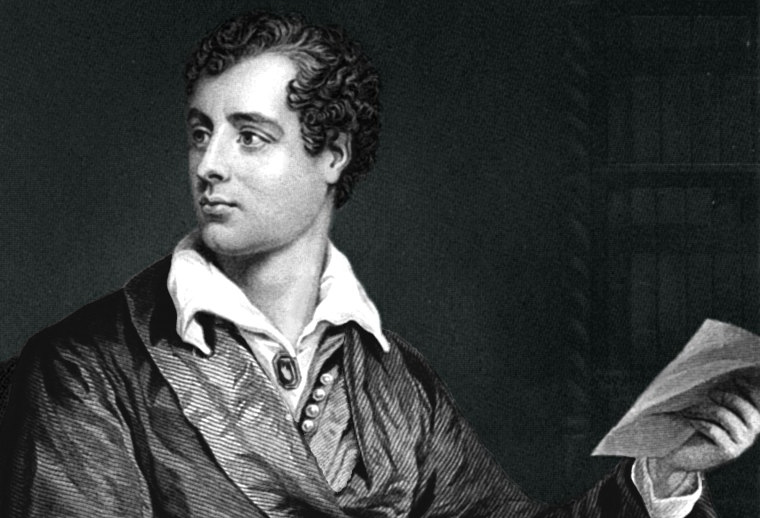
Teresa Guiccioli was Lord Byron’s final love. When they met in Venice around 1818, Teresa was married to an Italian nobleman forty years her senior. The bond between Byron and Teresa, however, was immediate and intense, and the pair caused a scandal by appearing publicly as a couple. (Byron, fearing retribution from the Count, was constantly armed with a sword and pistols.) The letter below was scribbled on the flyleaf of a novel that belonged to Teresa. Lord Byron eventually left Italy in order to support the campaign for Greek independence, but fell ill before he could take up arms. He passed away on April 19, 1824 at thirty-six.
Bologna, 25 August, 1819
My dearest Teresa,
I have read this book in your garden;—my love, you were absent, or else I could not have read it. It is a favourite book of yours, and the writer was a friend of mine. You will not understand these English words, and others will not understand them,—which is the reason I have not scrawled them in Italian. But you will recognize the handwriting of him who passionately loved you, and you will divine that, over a book which was yours, he could only think of love.
In that word, beautiful in all languages, but most so in yours—Amor mio—is comprised my existence here and hereafter. I feel I exist here, and I feel I shall exist hereafter,—to what purpose you will decide; my destiny rests with you, and you are a woman, eighteen years of age, and two out of a convent. I wish that you had staid [sic] there, with all my heart,—or, at least, that I had never met you in your married state.
But all this is too late. I love you, and you love me,—at least, you say so, and act as if you did so, which last is a great consolation in all events. But I more than love you, and cannot cease to love you.
Think of me, sometimes, when the Alps and ocean divide us,—but they never will, unless you wish it.
Lord Byron
From Famous Love Letters. Edited by Ronald Tamplin. Pleasantville: The Reader’s Digest Association, Inc., 1995. p.54.
FURTHER READING
See a portrait of Byron’s lover.
Better still, view a bust of Teresa.
Read more about the relationship between the famous couple.
Discover a thorough analysis of Teresa’s influence on Byron’s poetry.
Watch a clip from The Trip to Italy, in which two British comedians follow in the footsteps of the Romantic poets.


